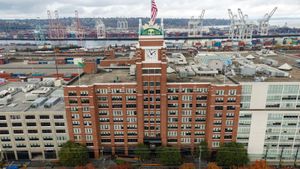TORONTO — Tensions are rising as Canada prepares for the possibility of retaliatory tariffs on specific U.S. products. This move is predominantly a response to President-elect Donald Trump's threats to impose significant tariffs on Canadian goods, igniting concerns over the potential economic fallout between the two neighboring countries.
Trump recently announced plans to implement a sweeping 25% tax on all products entering the U.S. from Canada and Mexico if these countries fail to curb the influx of drugs and migrants across their borders. He has characterized this issue as a major concern, framing tariffs as part of his strategy to tackle these challenges from the north and south.
"Canada is examining possible retaliatory tariffs on certain items as part of our preparations to safeguard our economy," noted one senior Canadian government official who spoke under anonymity due to the sensitivity surrounding trade discussions. The official emphasized, though, no final decisions have been made at this stage.
This scenario isn’t entirely unfamiliar for Canadian authorities. Back during Trump’s first term, Canada implemented similar retaliatory tariffs, particularly after the U.S. imposed levies on Canadian steel and aluminum. At the time, the Canadian government targeted key U.S. products such as American whiskey and yogurt, opting for items from political battleground states. This past experience suggests Canada is already strategizing which goods might be affected should tragedy strike again.
For example, during the earlier trade conflict, yogurt — predominantly sourced from Wisconsin, the home state of former House Speaker Paul Ryan — was hit with 10% duties. Similarly, whiskey from Kentucky was included on the tariff list, affecting products from states symbolic to significant Republican figures like Mitch McConnell.
Despite these economic maneuvers, Canada’s officials have expressed concern over the generalization of Canada alongside Mexico. They argue the differences between the two nations' immigration situations should be recognized. Data shows there were significantly fewer arrests at the Canadian border—23,721 between October 2023 and September 2024—compared to over 56,530 at the Mexican border just last October.
Moving forward, Canadian Prime Minister Justin Trudeau’s administration appears determined to respond firmly to any potential U.S. tariffs. Conversations and strategies are being discussed internally, signaling Canada is serious about protecting its trade interests, much like the tit-for-tat days of past trade disputes.
Trade agreements have historically been complex, with shared industries between the nations accounting for significant portions of their economies. The fear is if Trump follows through with his threats, it might lead to another round of trade war, creating rippling effects on both sides of the border. Local businesses could be affected significantly, as prices for goods rise due to tariffs, potentially leading to job losses and economic instability.
U.S. and Canadian experts on trade are monitoring this situation closely. Some are optimistic about the possibility of dialogue and negotiation, which could lead to resolutions benefiting both parties, rather than resorting to punitive measures. There are calls for cooperation, especially considering the interlinked nature of both countries’ economies, which rely heavily on mutual trade.
While Trump may be eager to bring voters' attention to immigration and border control through hardline policies, the stakes involved with trade could result in broader consequences. Each decision from the White House generates direct effects for nearby Canadian businesses, exporters, and consumers who rely on imported goods and technologies.
Many Canadians will hope their government remains firm yet rational through any coming negotiations. Recent history shows how quickly cross-border relationships can sour, and the pressing inquiry remains; will Canada move forward with retaliatory tariffs? Only time will tell as conversations mean certain products remain under watchful scrutiny.



